Learn about some of the amazing women who helped shape the history of The United Methodist Church.
This is just a start. There are many, many more!
Predecessor denominations
1784 - The Methodist Episcopal Church is established at the Christmas Conference in Baltimore.
1800 - The United Brethren in Christ is founded by Philip Otterbein and Martin Boehm.
1807 - The Evangelical Association is organized. Jacob Albright is elected bishop.
1830 - The Methodist Protestant Church is organized by a group from the Methodist Episcopal Church.
1844 - The Methodist Episcopal Church, South separates from The Methodist Episcopal Church.
1922 - The Evangelical Church is formed, reuniting the Evangelical Association and the United Evangelical Church.
1939 - The Methodist Church is formed through the union of the Methodist Episcopal Church, the Methodist Episcopal Church, South and the Methodist Protestant Church.
1946 - The Evangelical United Brethren Church is created by merger of the Evangelical Church and the United Brethren Church.
1968 - The United Methodist Church is formed by the union of The Evangelical United Brethren Church and The Methodist Church.
c. 1770
Mary Evans Thorne is appointed class leader by Joseph Pilmore in Philadelphia; she is probably the first woman in America so appointed.
1768
Barbara Heck, known as the mother of American Methodism, urges Philip Embury to start preaching in New York and designs John Street Chapel in New York City.
1787
Despite objections of some male preachers, John Wesley authorizes Sarah Mallet to preach as long as "she proclaimed the doctrines and adhered to the disciplines that all Methodist preachers were expected to accept."
1827
Isabella Bomefree, a slave who later changes her name to Sojourner Truth, is emancipated when slavery is abolished in New York State. That same year, she co-founds Kingston Methodist Church. In 1843, she feels "called in the spirit" and begins to travel and preach. She becomes involved in the abolitionist movement, and her public speaking combines her religious faith with her experiences as a slave.
1834
Sophronia Farrington, the first single missionary, arrives in Liberia.
1835
Phoebe Palmer, evangelist and mother of the American holiness movement, conducts weekly prayer meetings in her home.
1837
Ann Wilkins is appointed missionary to Liberia by the Methodist Episcopal Missionary Society.
1849
Charity Opheral is granted a preacher's license by the United Brethren Church.
1851
Lydia Sexton is recommended as a "pulpit speaker" by the United Brethren General Conference.
1856
Clementina Rowe Butler and her husband William arrive as the first Methodist Episcopal Church missionaries to India. In 1872, they establish a Methodist Episcopal mission in Mexico.
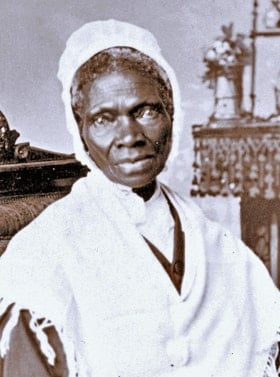
1857
The United Brethren General Conference passes a resolution that no woman should be allowed to preach.
1862
Amanda Hanby Billhelimer becomes the first United Brethren in Christ woman to serve as a missionary when she begins service in Sierra Leone with her husband.
1863
Fanny Crosby, a lifelong Methodist blind from infancy, writes her first hymn. She writes more than 9,000 hymns, many of which remain perennial favorites (for example, "Blessed Assurance," "To God Be the Glory" and "Pass Me Not, O Gentle Savior."
1866
Helenor M. Davisson is ordained deacon by the North Indiana Conference of the Methodist Protestant Church, making her the first ordained woman in the Methodist tradition.
1869
Margaret Newton Van Cott is the first woman in the Methodist Episcopal Church to receive a local preacher's license.
Isabella Thoburn and Clara Swain leave for India where Thoburn launches a college in Lucknow that bears her name. Dr. Swain begins medical work in Bareli, and a hospital is later named in her honor.
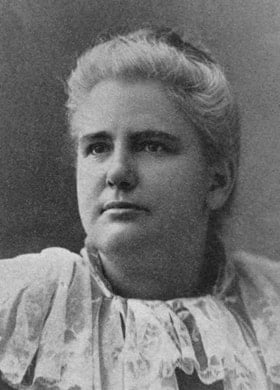
1873
Anna Howard Shaw acquires a local preacher's license in the Methodist Episcopal Church.
1875
Pauline Williams Martindale is ordained an elder in the Methodist Protestant Church.
1876
Anna Oliver, the first woman to graduate from an American seminary, receives a Bachelor of Divinity degree from Boston University School of Theology.
1878
Lochie Rankin goes to China as the first missionary of the Methodist Episcopal Church.
1880
Anna Howard Shaw and Anna Oliver are refused ordination rights by the Methodist Episcopal General Conference. Shaw joins the Methodist Protestant Church and is ordained in the New York Annual Conference.
1884
The Methodist Protestant Church rules Anna Howard Shaw's ordination out of order.
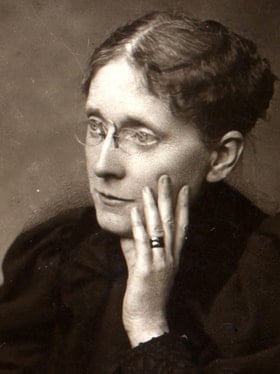
1888
Five women, including Frances Willard who is the president of the Women's Christian Temperance Union, are elected lay delegates to the Methodist Episcopal General Conference. Male reserves later replace them.
The denomination establishes a deaconess program for laywomen. Deaconesses serve the church in any capacity not requiring full clergy rights in ministries of love, justice and service.
1889
Ella Niswonger is the first woman to be ordained by the United Brethren Church.
1892
Anna Oliver and Amanda Berry Smith share a pulpit in a New Jersey church. The Methodist Protestant Church is the first to seat women as General Conference delegates.
1894
Sarah Dickey is ordained by the United Brethren Church.
1904
Minnie Jackson Goins of Kansas becomes the first African-American woman to be ordained elder in the United Brethren Church.
1906
Martha Drummer, a black deaconess, is sent to Angola by the Woman's Foreign Missionary Society of the Methodist Episcopal Church.
Anna Hall, a black deaconess, goes to Liberia.
Timeline of women's mission organizations
1856
Methodist Mission in India is established.
1869
Eight women form the Woman’s Foreign Missionary Society during a meeting at Tremont Methodist Episcopal Church in Boston.
1875
Woman’s Missionary Association of the United Brethren Church is created.
1878
Women in the Methodist Episcopal Church, South organize the Woman’s Foreign Missionary Society.
1879
Meeting in Pittsburgh, women of the Methodist Protestant Church organize the Woman’s Foreign Missionary Society.
1880
Women’s Home Missionary Society of the Methodist Episcopal Church is established.
1884
Woman’s Missionary Society of the Evangelical Association is created.
1890
The Methodist Episcopal General Conference recognizes the Woman’s Home Missionary Society.
1891
Woman’s Home and Foreign Missionary Society of the United Evangelical Church is established.
1893
The Woman’s Home Missionary Society of the Methodist Protestant Church is organized.
1904
Ladies Aid Societies are officially recognized in the 1903 Methodist Episcopal Discipline.
1910
The Woman’s Home Missionary Society and the Women’s Foreign Missionary Society of the Methodist Episcopal Church, South are joined under one Woman’s Missionary Council and made part of the general missionary organization of the church.
1921
Wesleyan Service Guild is organized for Methodist Episcopal women employed outside the home.
1939
The various women’s home and foreign missionary societies of the uniting churches become the Woman’s Society of Christian Service. The Wesleyan Service Guild remains a separate organization.
1946
Women’s Society of World Service of the Evangelical United Brethren Church is created.
1949
Ellen Barnette and Pearl Bellinger become the first African-American women missionaries sent to India.
1968
The women’s organizations are merged as the Women’s Society of Christian Service and the Wesleyan Service Guild.
1972
The Women’s Society of Christian Service and the Wesleyan Service Guild are united to form United Methodist Women.
General Conference established the Commission on the Status and Role of Women.
2022
United Methodist Women becomes United Women in Faith.
1920
The Methodist Episcopal Church grants women the right to be licensed as local preachers.
1922
Eighteen women are seated as the first female lay delegates to the General Conference of the Methodist Episcopal Church.
1924
The Methodist Episcopal Church grants women limited clergy rights as local elders or deacons, without conference membership.
1930
The General Conference of the Methodist Episcopal Church South rejects full clergy rights for women.
1932
Mildred Moody Eakin is made a full professor at Drew Theological Seminary.
1944, 1948, 1952
The Woman's Society of Christian Service of The Methodist Church petitions General Conference for full clergy rights for women, but is rejected each time.
1946
Women are denied ordination in the newly formed Evangelical United Brethren Church.
1955
The Philippines Central Conference receives permission from the Methodist Judicial Council to ordain a woman as a local deacon.
Paula Mojzes is appointed acting superintendent in Serbia-Montenegro/Macedonia Provisional Conference of the Methodist Church two years before she is ordained deacon.
1956
The Methodist Church grants full clergy rights to women. Maud Keister Jensen is the first to receive such rights.
1958
Antonia Wladar is the first woman to be ordained in the Central European Conference.
1959
The Rev. Gusta A. Robinette, a missionary in the Sumatra (Indonesia) Conference, is ordained and appointed superintendent of the Medan Chinese District, the first Methodist woman to hold that position.
1961
Julia Torres Fernandez becomes the first Hispanic woman to be ordained elder with the Methodist Church.
1967
Margaret Henrichsen is the first American woman to be appointed district superintendent.
1968
The Methodist and the Evangelical United Brethren churches unite to form The United Methodist Church. The merged church affirms full clergy rights for women.
The Women's Division successfully petitions General Conference to create a study commission to document the extent to which women are involved in all structural levels of the denomination.
Teressa Hoover becomes the first African American woman to serve as a top staff executive for The United Methodist Church. She would go on to lead the Women's Division for 22 years.
Kathryn Mowrey Grove becomes the first laywoman elected to the United Methodist Judicial Council.
1971
Cornelia Mauyao is the first woman ordained an elder in the Philippines Central Conference.
1972
General Conference creates the Commission on the Status and Role of Women as a four-year agency. Barbara Ricks Thompson is elected president.
1973
The new commission elects the Rev. Nancy (Nan) Grissom Self and Judith Leaming Elmer as executive secretariat, the first two-person secretariat in the denomination.
1976
General Conference makes the commission a standing (ongoing) agency. Clergywomen delegates are elected for the first time.
1979
Mutombo Ilunga Kimba is the first woman ordained elder in the Congo, the Africa Central Conference.
1980
Marjorie Matthews is the first woman to be elected bishop of The United Methodist Church.
Three women (Anita Araya, Donna Morissette and Hazel Decker) and three men deliver the first laity address to General Conference.
1982
Mamie Ming Yan Ko, California-Pacific Conference, and Mochie Lam, California-Nevada Conference, become the first Chinese American women to be ordained elder.
1983
Colleen Kyung Seen Chun of the California-Pacific Conference becomes the first Korean American woman to be ordained elder.
1984
Leontine T.C. Kelly is the first African-American woman to be elected bishop.
1985
Barbara Ricks Thompson is elected top staff executive of the United Methodist Commission on Religion and Race.
1989
Lois V. Glory-Neal of the Oklahoma Indian Missionary Conference becomes the first Native American woman to be ordained elder. She became the first Native American district superintendent in 1992.
1990
Lydia (Lidia) Istomina made history as the first woman pastor in the former Soviet Union, marking a resurgence of faith after 70 years of atheism. In 1990, she founded the first United Methodist Church (UMC) in Russia. By September 1991, Bishops William Oden and Hans Vaxby officially appointed Istomina to serve the church she initiated, acknowledging her pivotal role in reigniting spiritual life in post-Soviet Russia.
1992
Ana Moala Tiueti was the first native Tongan woman ordained as a Methodist elder in the US (and in the world).
1994
Barbara Boigegrain is elected top staff executive of the General Board of Pension and Health Benefits.
Judith Weidman is the first woman elected top staff executive of United Methodist Communications.
1995
Sandra Lackore becomes the first woman elected top staff executive and treasurer of the United Methodist Council on Finance and Administration.
1996
First Lady Hillary Clinton speaks to General Conference in Denver.
Bishop Judith Craig becomes the first woman to deliver the episcopal address to General Conference.
2001
Karen A. Greenwaldt becomes the first woman elected to serve as chief executive for the General Board of Discipleship.
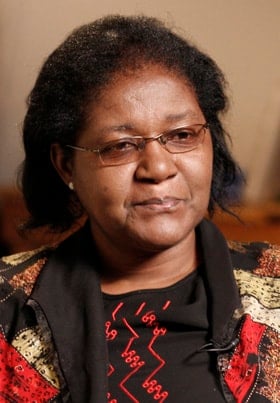
2002
Bishop Sharon Brown Christopher becomes the first woman to serve as president of the Council of Bishops.
2003
Linita Uluave Moa becomes the first Tongan woman to be ordained elder.
2004
Minerva G. Carcaño becomes the first Hispanic woman bishop.
2005
Rosemarie J. Wenner becomes the first European woman bishop.
2007
Erin Hawkins is elected top executive of the United Methodist Commission on Religion and Race.
2008
Joaquina Filipe Nhanala becomes the first African woman bishop, the 19th woman elected to the episcopacy.
Liberian President Ellen Johnson Sirleaf speaks to General Conference in Fort Worth.
According to a 2008 survey, female clergy lead only 94 of the 1,200 United Methodist churches in the U.S. with 1,000 or more members. The survey also reports 27 percent of United Methodist clergy are female.
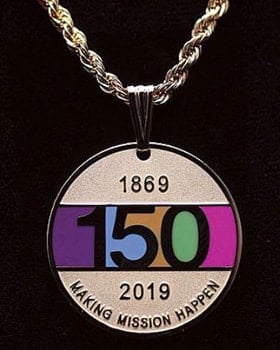
Photo courtesy of United Methodist Women
2011
Liberian President Ellen Johnson Sirleaf and two other women were awarded the 2011 Nobel Peace Prize for their work on women's rights.
Johnson Sirleaf was elected to a second term as president of Liberia.
2012
General Conference delegates vote to make United Methodist Women a separate organization rather than a part of the Board of Global Ministries.
2019
UMW celebrates 150 years since eight denominations came together and began women's missionary societies. In 1869, the Woman's Foreign Missionary Society first organized in Boston in response to a lack of women's health care in India.
2022
United Methodist Women becomes United Women in Faith.
The General Commission on the Status and Role of Women celebrates its 50th anniversary.
Across the denomination, eight women are elected bishops.
As with all lists of this sort, we recognize we have not included everyone. Is there someone you think needs to be included? Email us.





